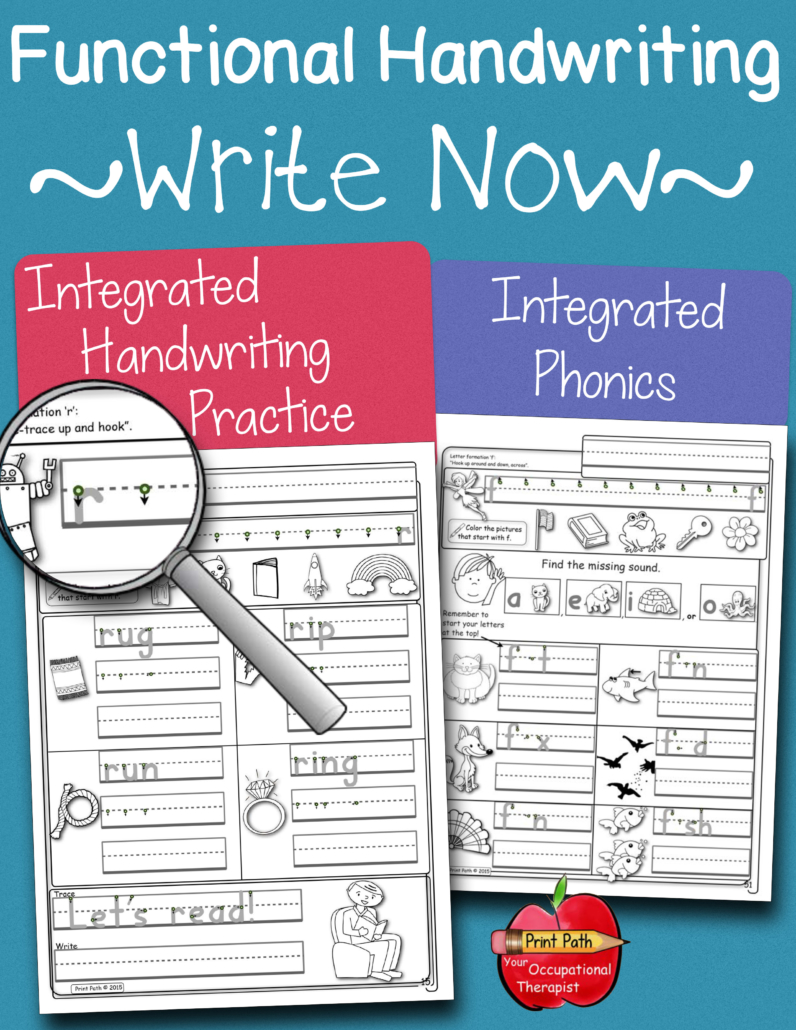Handwriting in Kindergarten and How it Helps with Reading
If you work with kindergarteners, you know how important it is to start teaching the basic of handwriting in kindergarten. Not only does handwriting instruction help with legibility, did you know that it can also help with reading skills?

A recent study was done to determine if handwriting instruction had an effect on the reading skills on kindergarteners.
What Does the Research Say on Reading and Handwriting in Kindergarten?
Reading requires students to understand written text and in order for that to happen they need to decode written words and understand their meanings. Decoding words requires students to recognize the actual letters and letter sounds.
In kindergarten, students begin to learn to recognize and write the letters of the alphabet. Researchers recently investigated the effectiveness of a handwriting intervention that focuses on the recall, retrieval, reproduction, and repetition (the 4Rs model) of grapheme–phoneme relations.
The study included 77 kindergarten students across four classrooms in two schools. One of the schools received an 8 week handwriting intervention. Assessment measurements were taken at baseline, immediately after the eight-week intervention period, and at 12 weeks following the end of the intervention.
Following analysis, the data indicated the following:
- statistically significant Group × Time effects for letter name knowledge and word reading.
- changes in letter sound knowledge and nonsense word–reading fluency approaching statistical significance.
The researchers concluded that providing an intervention for handwriting in kindergarten that incorporates repeated practice in recalling and reproducing letter forms, had a statistically significant impact on early reading skills in the students.
Reference: Ray, K., Dally, K., Colyvas, K., & Lane, A. E. (2021). The Effects of a Whole‐Class Kindergarten Handwriting Intervention on Early Reading Skills. Reading Research Quarterly.

Functional Handwriting Practice
Handwriting Instruction is Important
It is important to remember that handwriting skills must be taught. Often times, students are just expected to begin practicing without having formal handwriting instruction.
The Journal of Occupational Therapy, Schools, and Early Intervention (Fancher et al, 2018) recently published a systemic review on handwriting acquisition and interventions for handwriting for preschoolers through second grade. The results indicated the following:
- writing letters in late preschool contributes to letter recognition.
- Elementary students do better when handwriting is explicitly taught.
- Legibility improves with adequate practice.
- Interventions based on motor learning theory and cognitive learning strategies are effective in improving legibility.
- remediation of performance deficits was not shown to be effective.
Reference: Fancher, L. A., Priestley-Hopkins, D. A., & Jeffries, L. M. (2018). Handwriting Acquisition and Intervention: A Systematic Review. Journal of Occupational Therapy, Schools, & Early Intervention, 11(4), 454-473.
Resources to Help with Handwriting in Kindergarten
Created by school-based Occupational Therapist, Thia Triggs, the Functional Handwriting Practice digital download integrates phonics, reading, & writing for students in grades K-1 and up.
hese worksheet activities meet Kindergarten Common Core Standards in the areas of Reading, Language, and Writing.
The 50 No-Prep pages help students to:
• Practice lowercase formations with path of movement language before functionally using a target letter
• Given picture cues, children identify initial sounds, spell short words, and write simple sight word sentences
• Identify, label, and draw emotions
• Identify and write number words
• Generate simple sentences with previously practiced nouns
• Categorize and write labels for common objects
• Use capitalization at start of sentences and proper nouns, put spaces between words, and determine ending punctuation
• Answering ‘wh’ questions – who, what, & where


